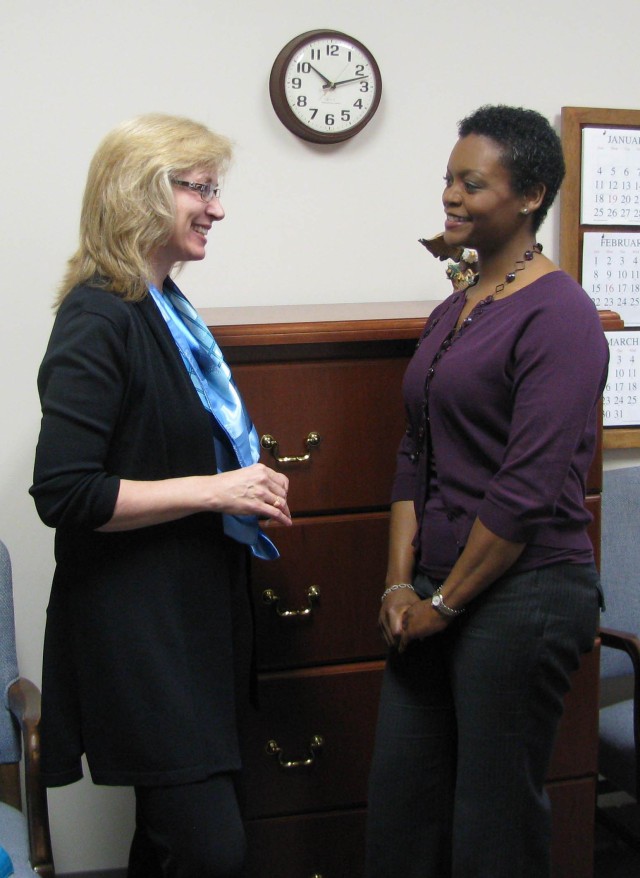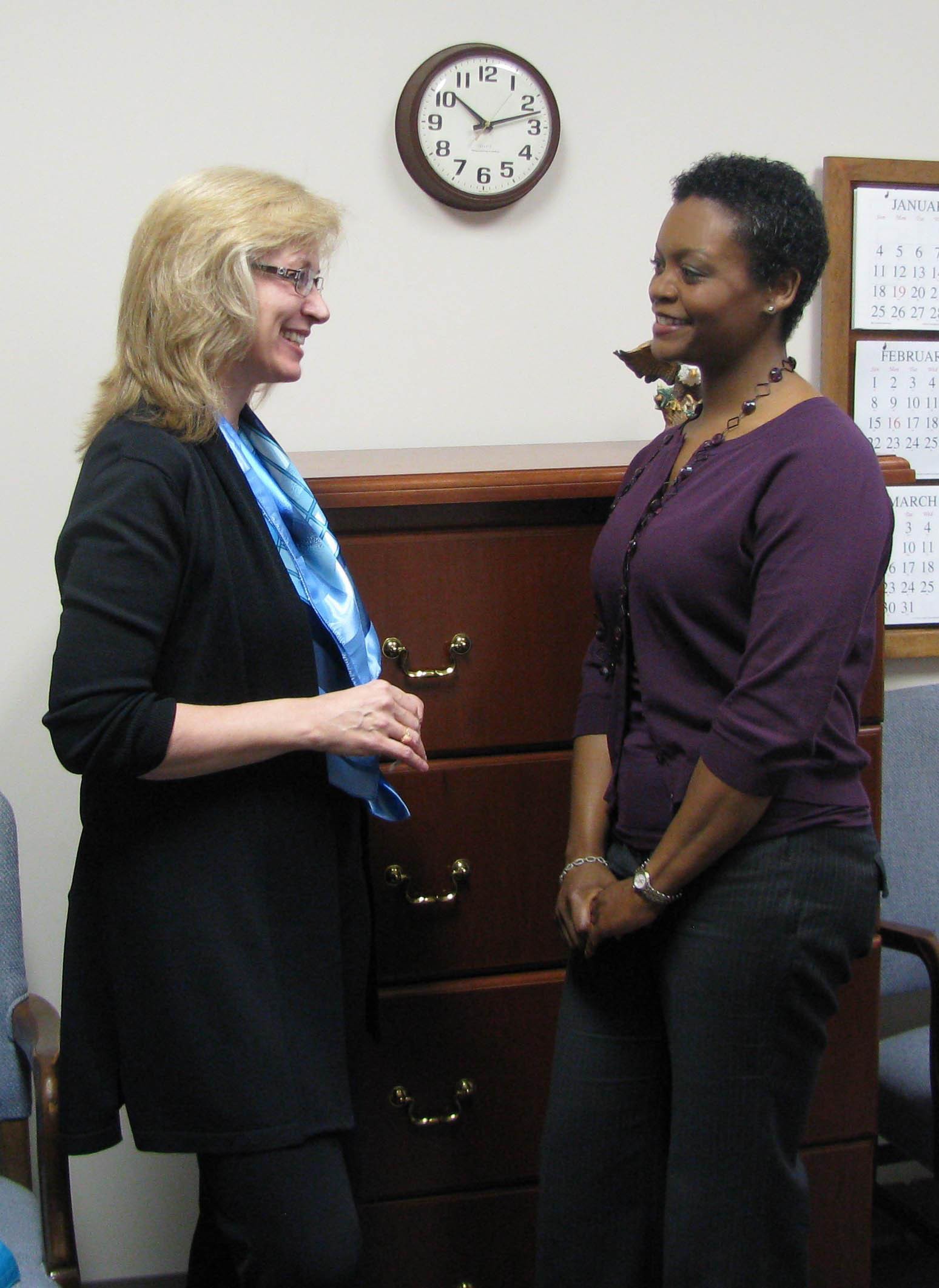With an aging work force headed toward retirement, work force development is on the minds of many organizations at Redstone. The Garrison is no exception. The new Garrison Intern Program is working toward continuing to provide a quality staff for the organization that gives support to the entire installation.
"A large part of our work force is ready to retire in the next five years," Kathy Watkins, Garrison Intern Program lead mentor, said. "That's scary. We're turning the tide. The vision is to bring people in at the ground level to re-energize this work force."
Although there previously have been interns in the Garrison, this is the first time a centralized program has been established to oversee their development and training. It is the brainchild of Curtis Clark, deputy to the Garrison commander. Concerned for the future work force, he wanted to establish a formal program for interns.
"Mr. Clark is big on work force development," Watkins said.
The resulting program is a coordinated effort between Clark, Watkins, and key players within the Garrison.
"Joe Winston, director of Human Resources, has had a big part in this along with Glen Reese and Theresa Falcetano in DHR," Watkins said. "Joey Skinner (deputy director of Directorate of Public Works) is doing a lot to make this happen. They deserve a lot of credit."
By combining formal training with one-on-one mentoring and personal development within the program, organizers hope to create well-rounded employees. Watkins said they are looking at training from multiple views in order to pull the aspects together.
"We need to recruit the right people. We need to develop those people. We need to care for them in terms of the right benefits and the right pay," Watkins said.
Intern recruitment began in the fall at area colleges and universities. Some came to the program as co-op students working on post. Others were finishing graduate programs. Some are just beginning. All are qualified individuals with a lot of potential.
Currently, there are 13 interns participating in the program. Much like a college, Watkins expects interns to come in as "classes" annually. The first class is also helping to shape the new program into what it needs to be.
"This first pilot group is helping develop the program by what they document, their feedback," Watkins said.
Interns are classified in one of three ways, which impacts the individual development plan they follow. Directorate of Public Works interns rotate within that directorate. Resource Management interns do likewise within that office. The rest will be on rotation throughout all Garrison directorates.
"They will be on a full rotation schedule to every directorate we have," Watkins said. "The others will rotate to a couple of directorates so that they get a flavor of the key areas they need to broaden their knowledge even though they will probably end up as full-time employees in their directorates."
As lead mentor, Watkins works directly with the mentors assigned to each intern. She also meets with interns and hosts events where they can gather to discuss issues and provide feedback on the program.
All interns come in at GS-5. As they complete each of the four years in the program, they go up a grade. Once they complete the program, they have the opportunity to compete for a GS-12 position.
"We're trying to create an environment that provides opportunities," Watkins said. "However, it is ultimately up to these people to make their way with the tools we give them."


Social Sharing